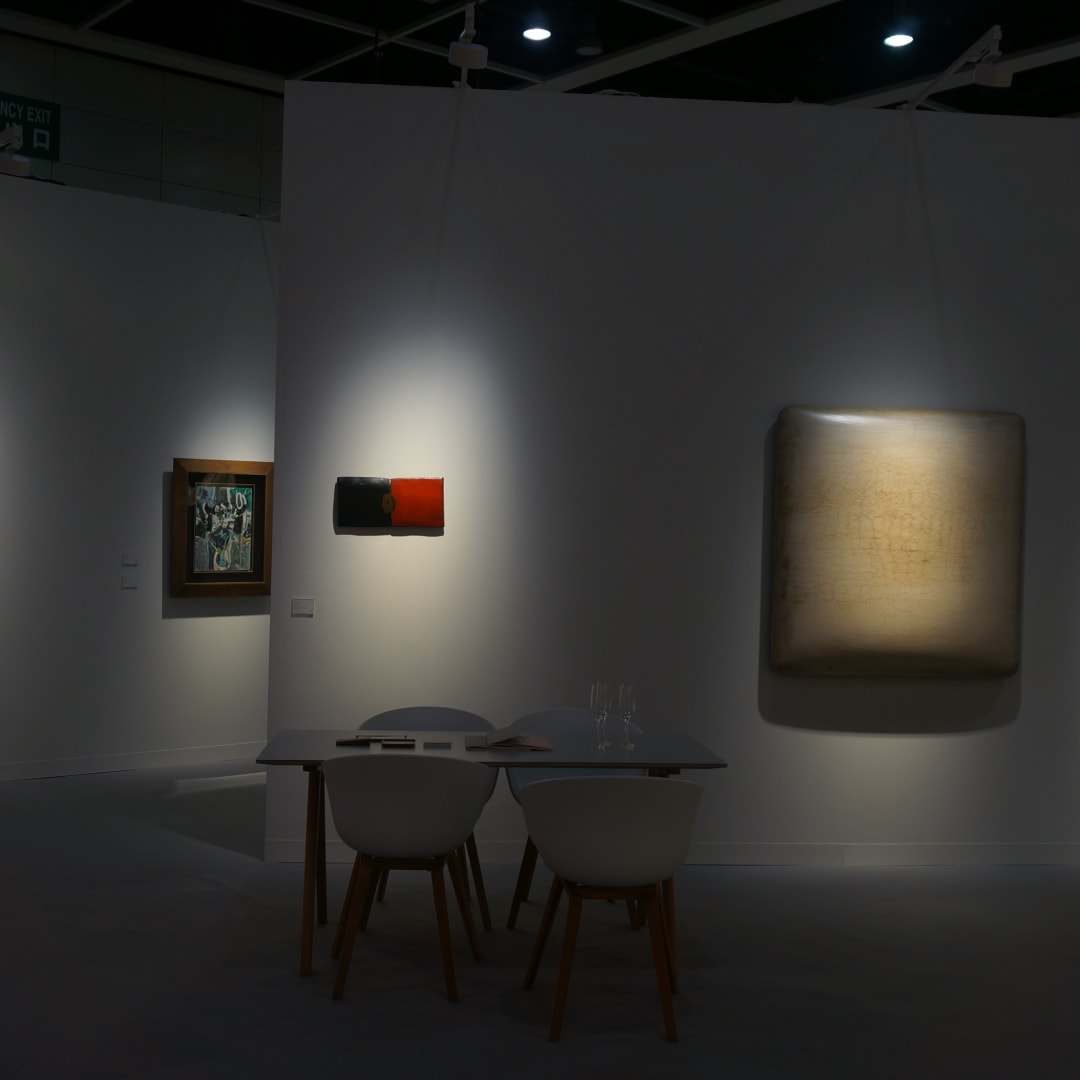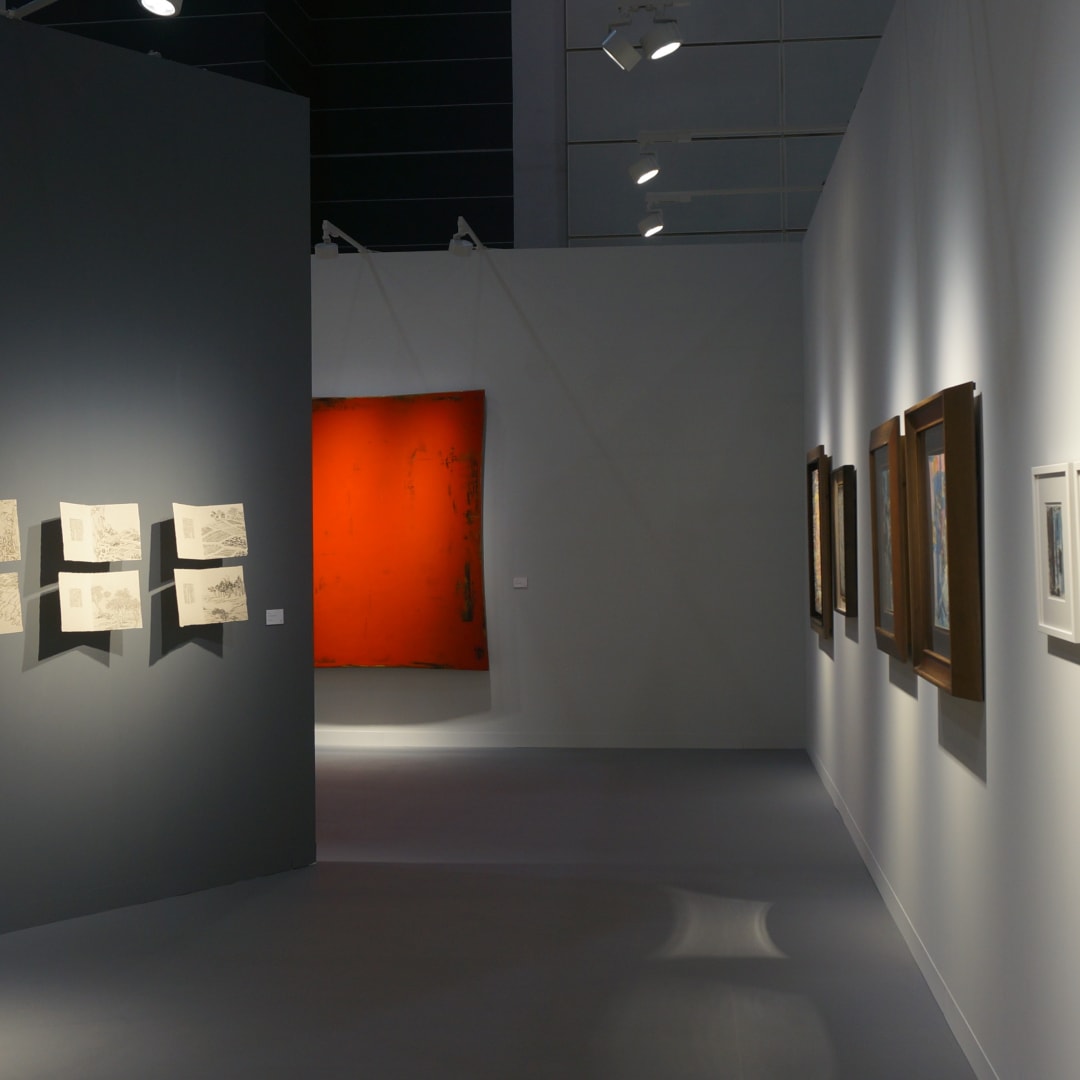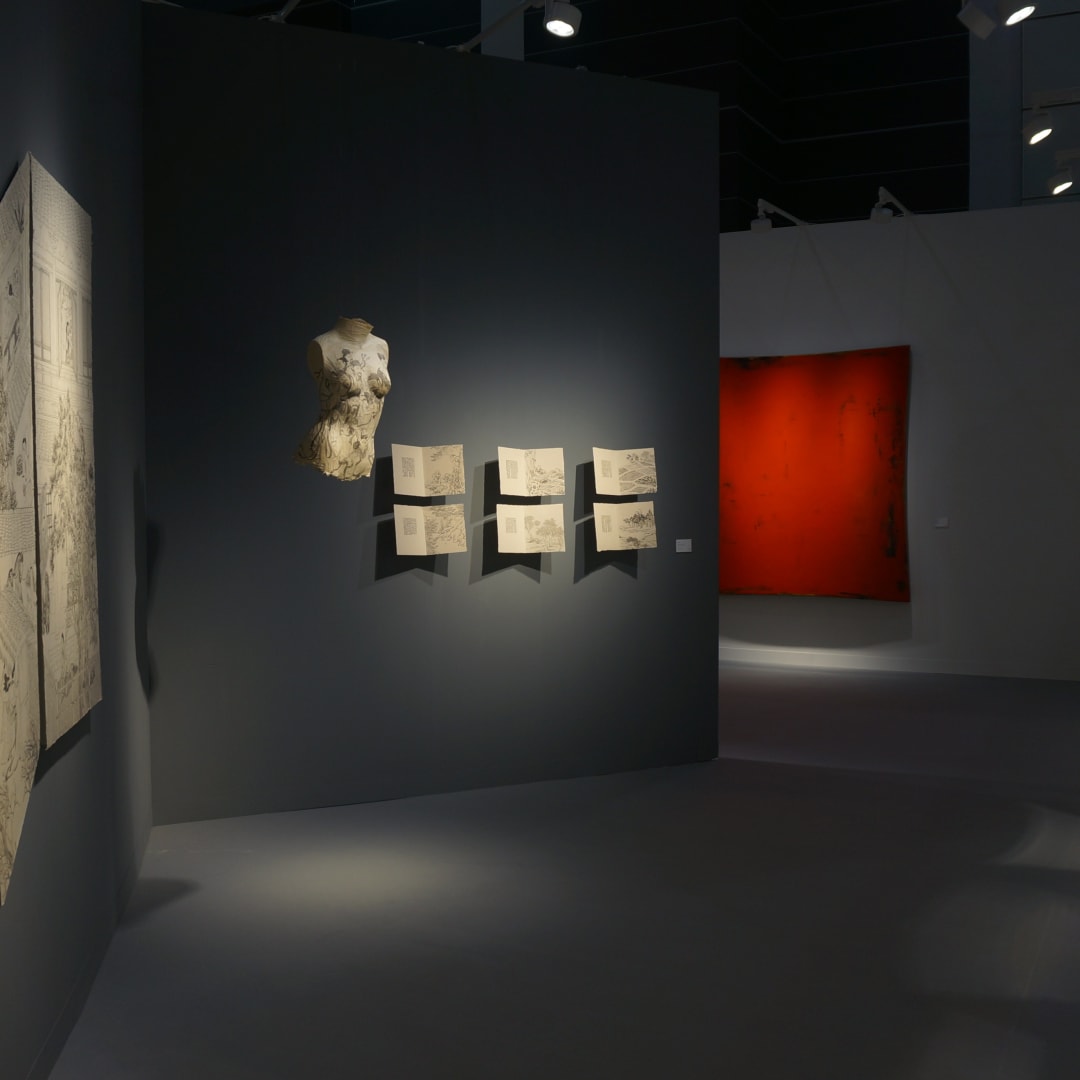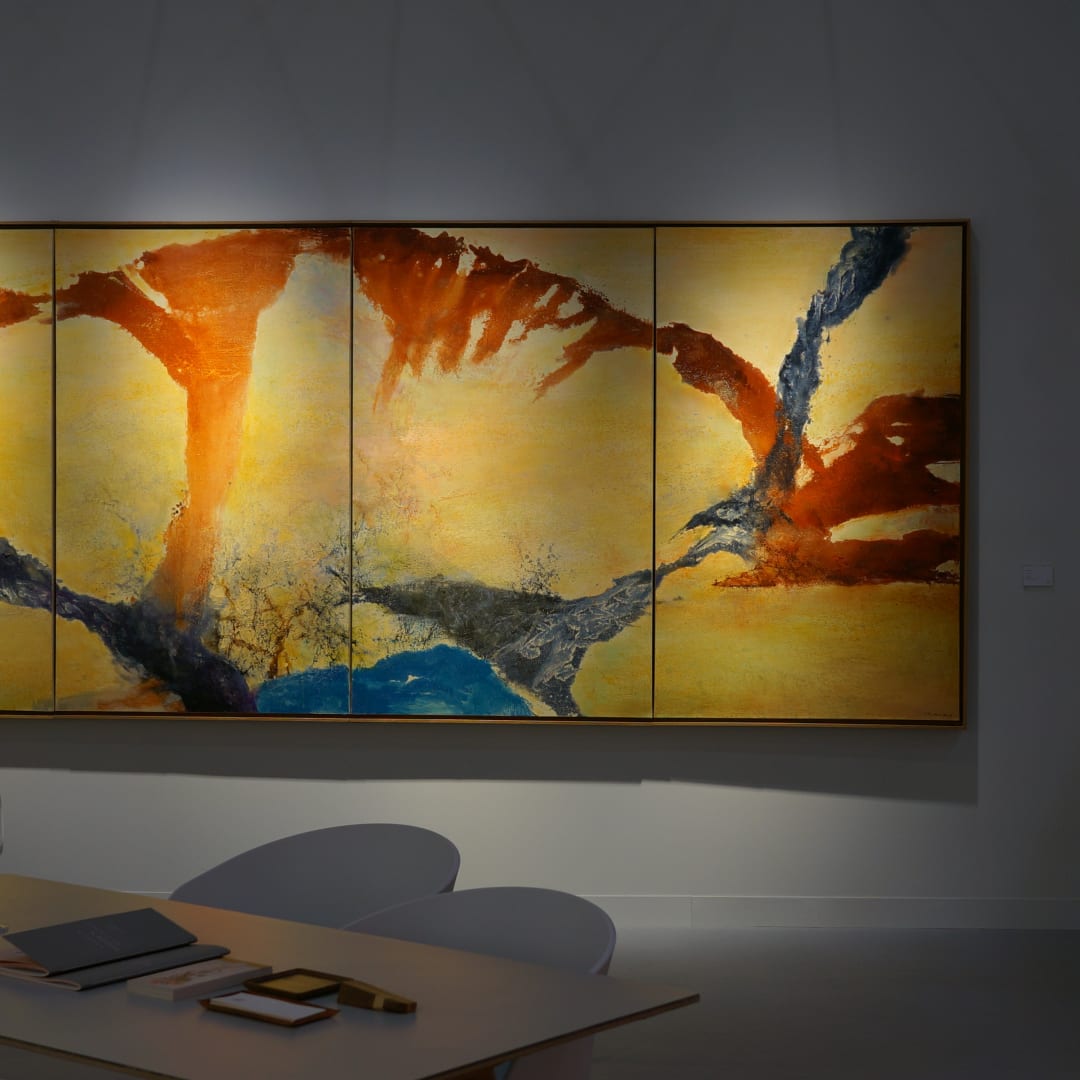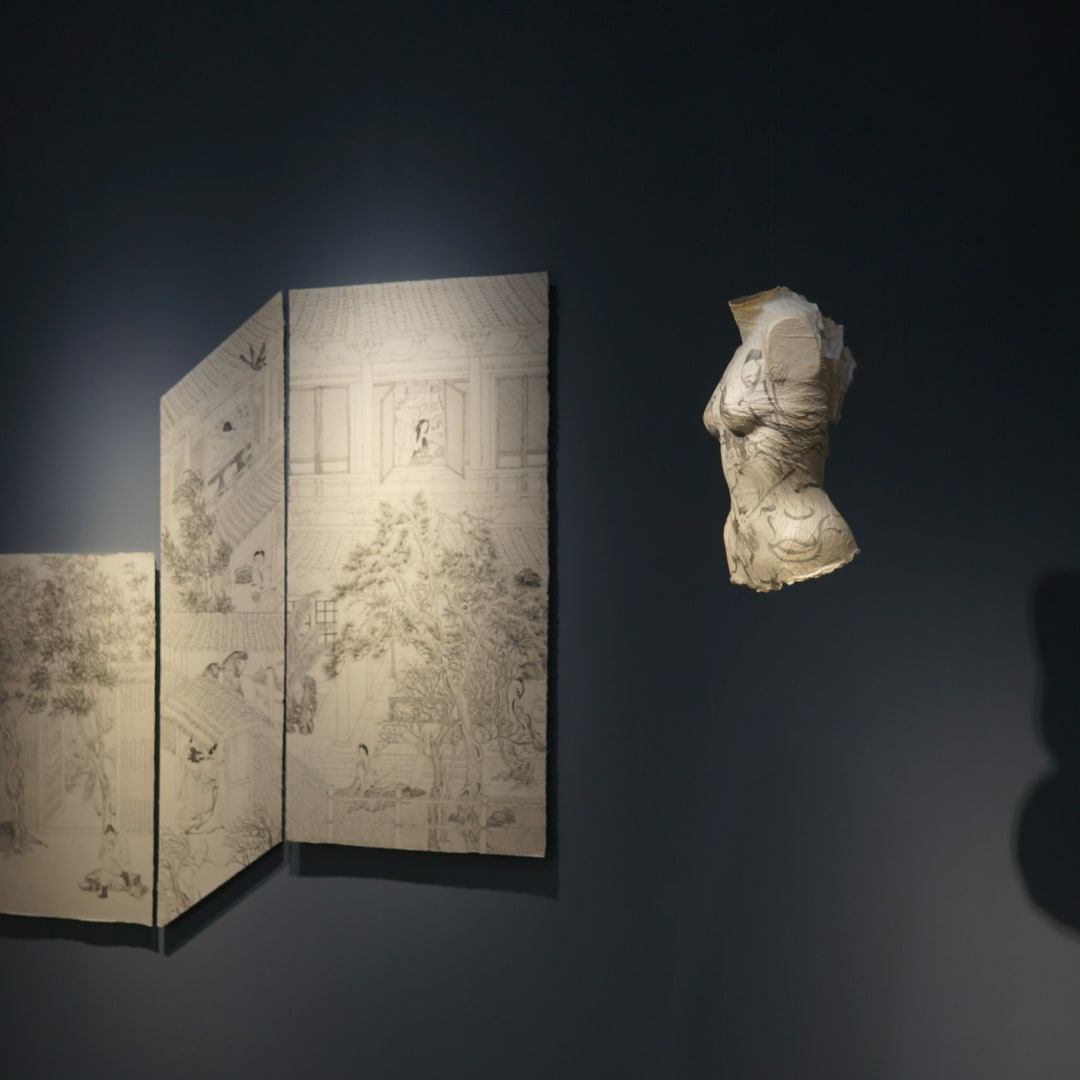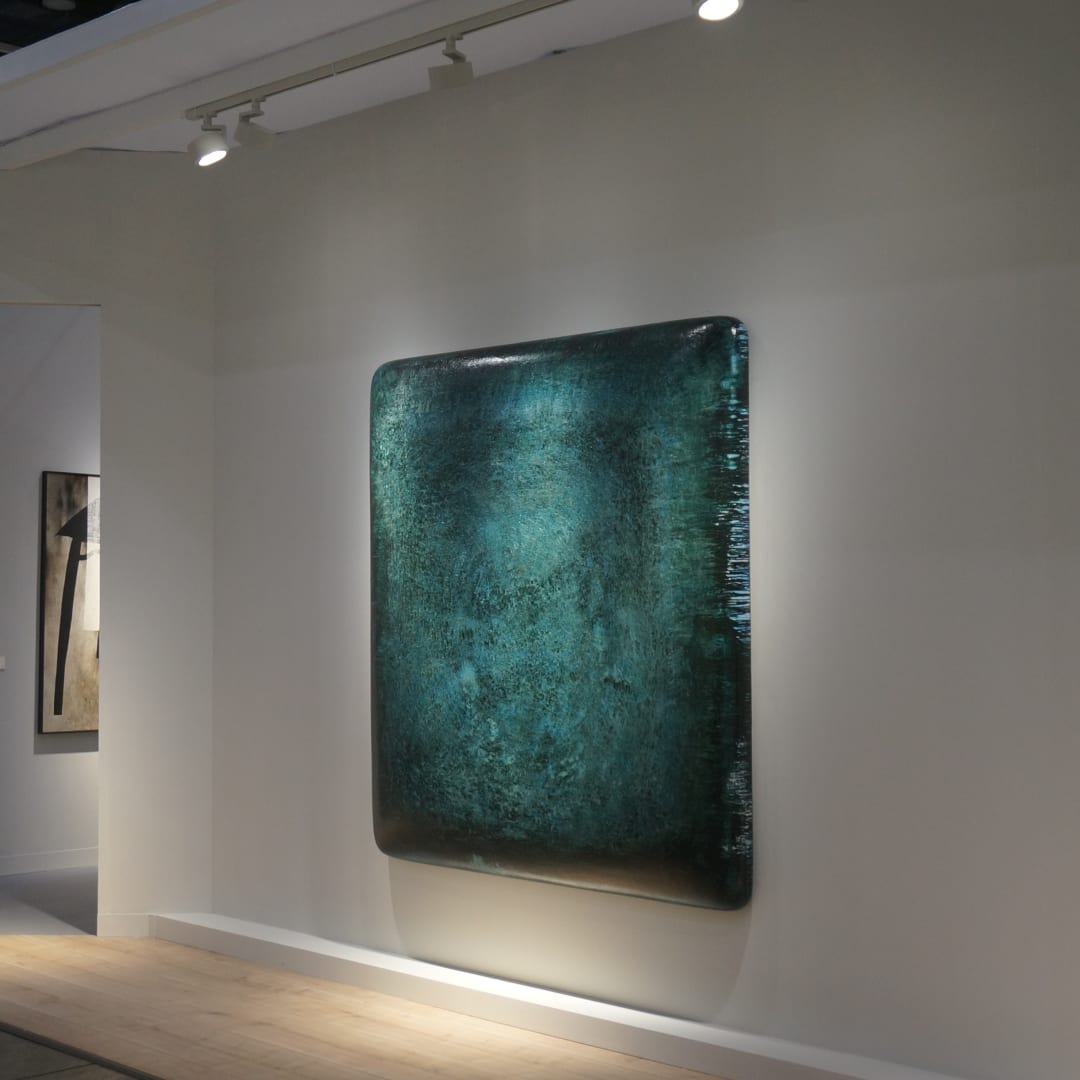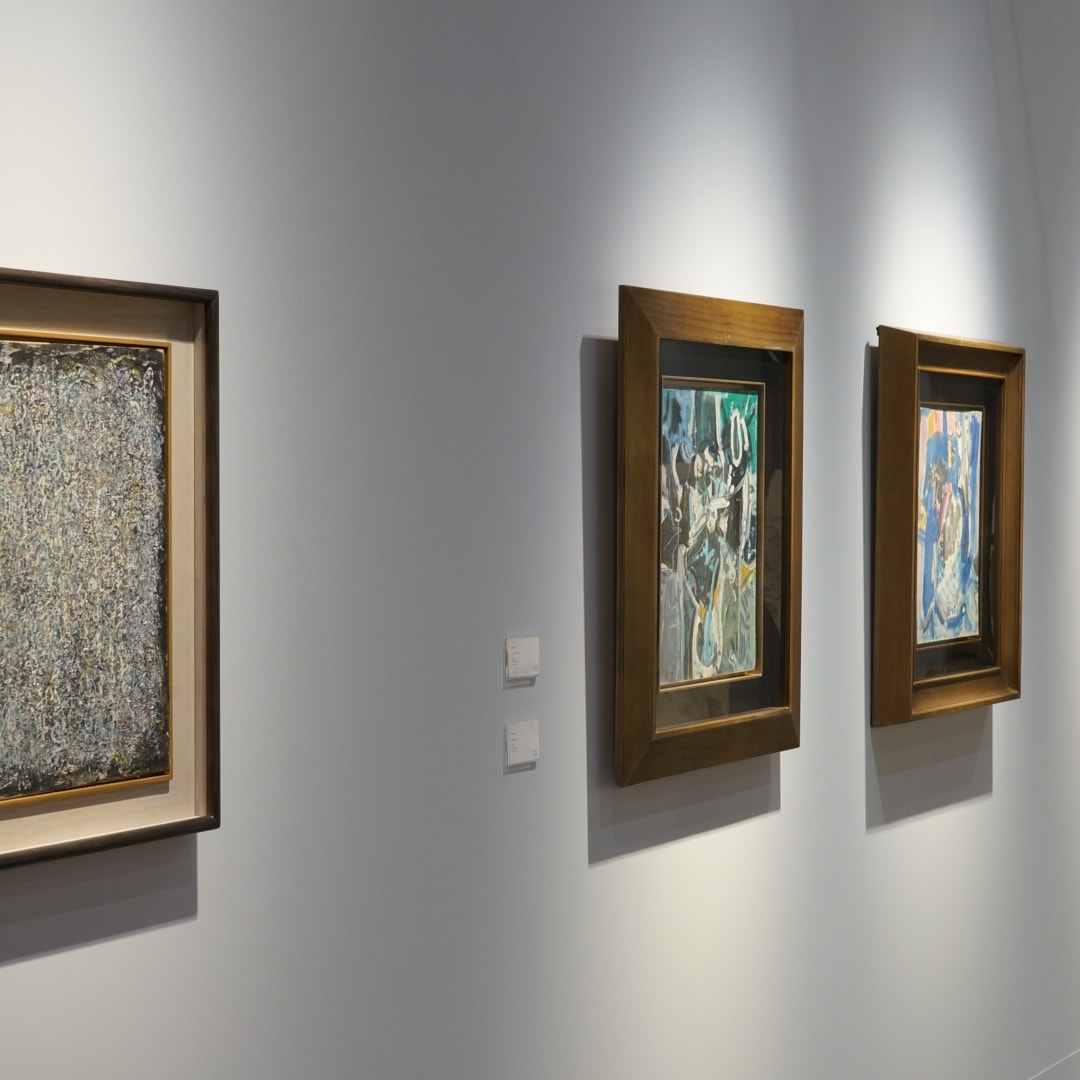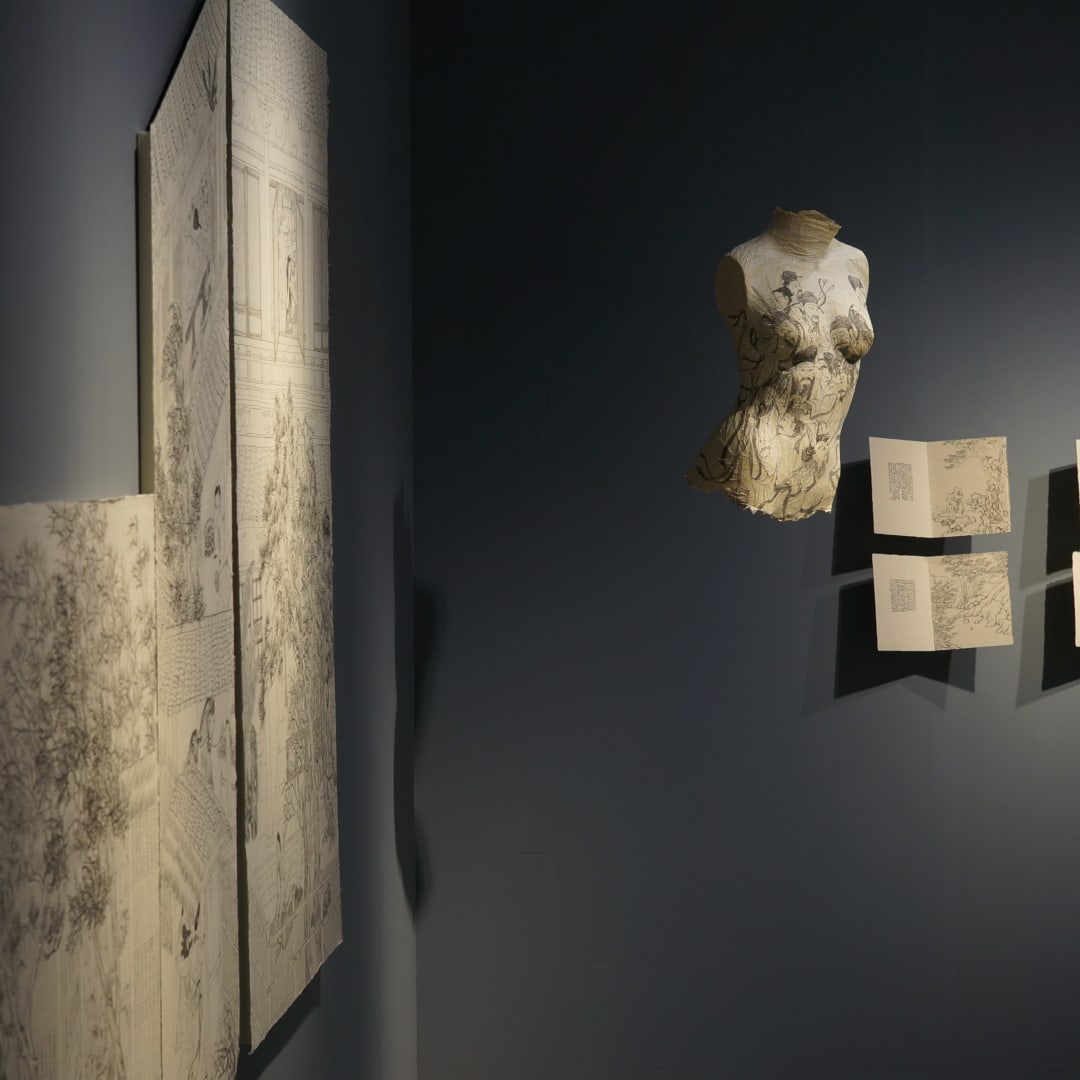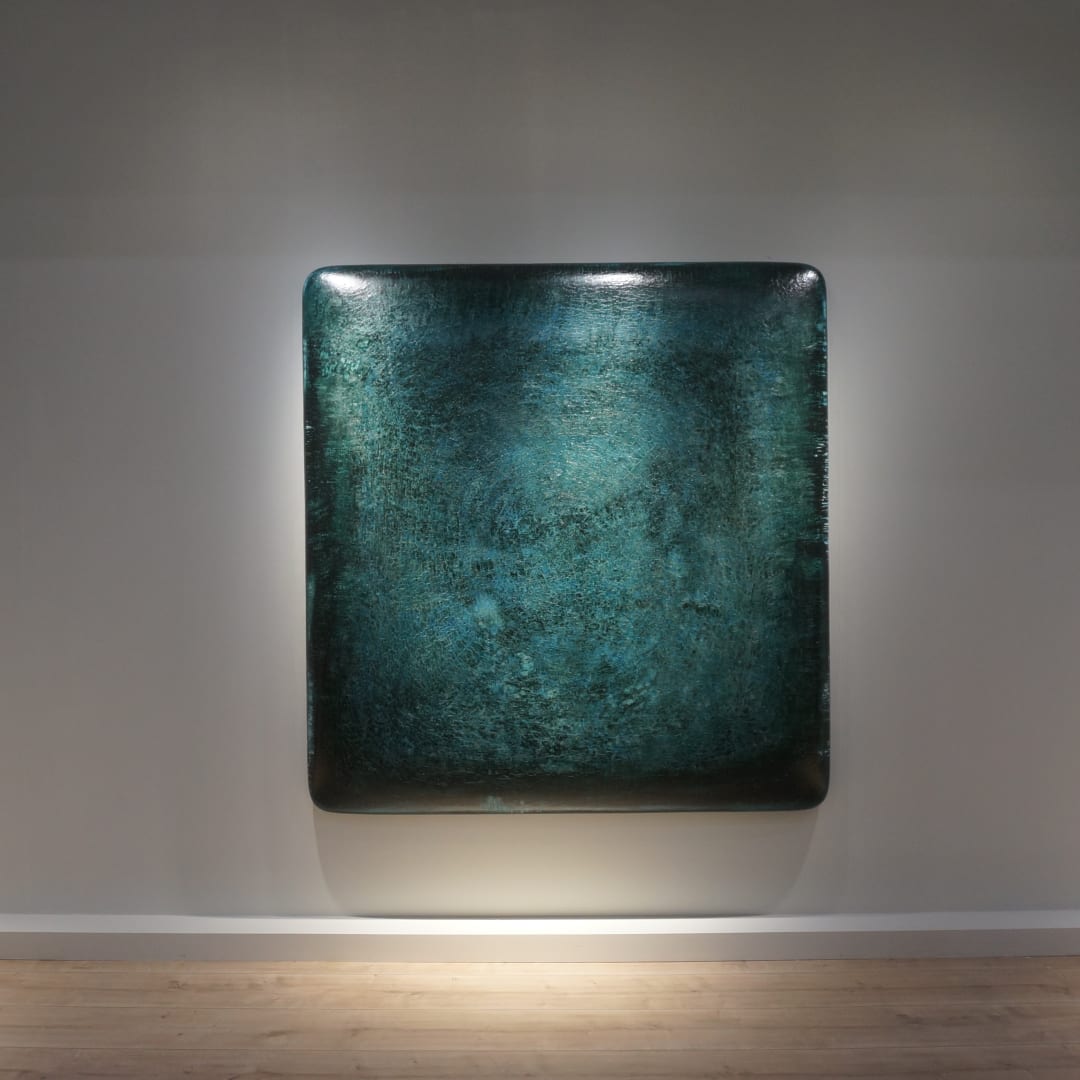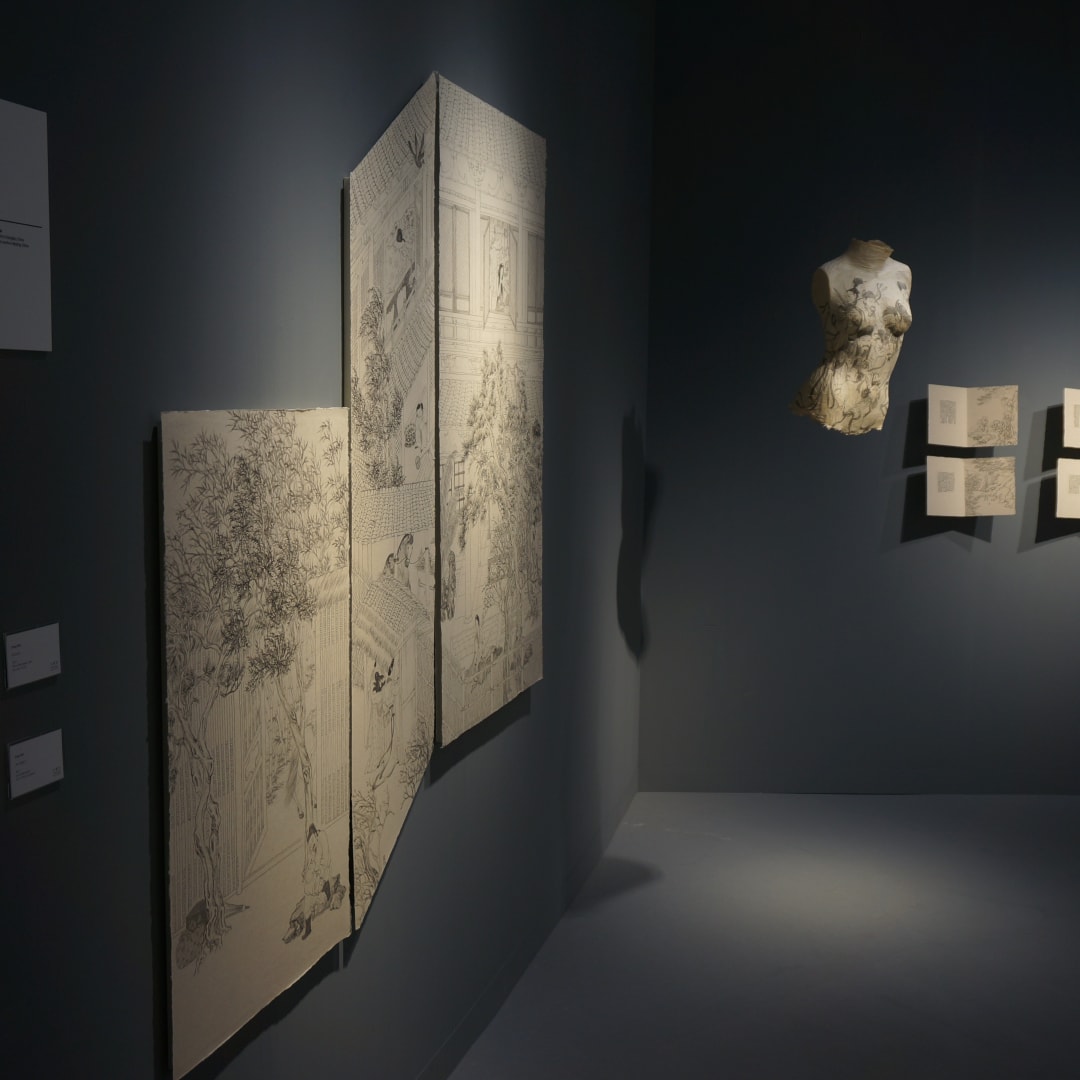Booth 3E06
Artists Wu Dayu, George Chann, Zao Wou-Ki, Wang Huaiqing, Su xiaobai
TheDivideand Continuation of Classics
What makes an artwork classic is not that it pays homage to classicism, or that it becomes a historical remnant. The reason why an artwork is classic is that it exudes an influence and aura that inspires artists in the coming generations. When we consider classics, we should not only regard them with esteem, but also reflect on the factors that contribute to their position in art history, in an attempt to create new classics in contemporary times. The Tina Keng Gallery is dedicated to establishing a platform on which to examine Greater Chinese contemporary art and carry on the legacy of Chinese art.
For the 2018 Art Basel in Hong Kong, we present Wu Dayu, Zao Wou-Ki, George Chann, Wang Huaiqing, and Su Xiaobai ina curated project that foregrounds the divide and continuation of China’s abstract art in the past century. Since the beginning of the 20thcentury, abstract art has morphed into various schools and styles due to constant warfare, which divided Chinese art into several fragments. Greater Chinese abstract artists across the globe have since developed distinctive styles that receive international recognition. Amidst the austere political atmosphere of the mid-20thcentury, Greater Chinese abstract art did not receive its fair share of attention in Asia until the 1990s, when abstract art regained its appeal and diverse abstract styles coalesced and expanded.
A pioneering figure of Chinese oil painting, Wu Dayu (1903–1988) introduced such prevalent European modern art movements as Impressionism, Fauvism, and Expressionism to China in the 1920s. As the dean of the Western painting department at the then National Hangzhou Arts Academy (now China Academy of Art), Wu spearheaded a new style of painting, while advocating a pure form of modern art, of artistic freedom, and of physical perception, thereby instigating the evolution of Chinese abstract painting. The first generation of artists nurtured by Wu at the academy would later achieve international recognition. Zao Wou-Ki (1921–2013) was a prominent example. He moved to France in 1948 to pursue studies, where he developed an abstract style characterized by an unrestrainedness that was uniquely his own. This signature style led to multiple solo exhibitions in Paris, in addition to his participation in the Salon d'Automne and Salon de Mai.
In contrast, George Chann (1913–1995), who broke out on the American art scene in the 1940s, took a different approach from Zao's European style that was deeply rooted in Chinese heritage. Chann's early body of work exuded a sense of humanitarian concern for the underclass before he shifted toward abstraction. Ancient Chinese artifacts and inscriptions were his inspirations, and his layering and deconstruction of Chinese characters, ink, and paper became his tribute to and re-imagination of Chinese legacy while he was oceans away from home. Amongst China's third generation of artists, Wang Huaiqing (b. 1944), a third-generation artist and a pupil of Wu Guanzhong, creates dispersed compositions through his deconstruction and reconstruction of architecture, furniture, and human figures. Teetering with a subtle restlessness, Wang's work treads the fine line between tradition and modernity.
Compared with Wang's approach to abstraction so ingrained in Chinese tradition, Su Xiaobai (b. 1949) takes a path that is closer to that of George Chann's. Su moved to Germany to pursue studies at the Düsseldorf Academy of Fine Arts in the 1980s. The following 20 years in Germany inspired his rethinking of mediums and his shift toward China's inherent cultural underpinnings, as he incorporates Eastern lacquer craftsmanship and ceramic qualities into Modernist painting. The labor-intensive process contrasted with his minimalist composition exemplifies the Taoist spirit of simplicity.
Our curated project The Divideand Continuation of Classicsserves as a vantage point from which to examine the different trajectories of Chinese abstract painting in the past century. Juxtaposing works of the five aforementioned artists, we aim to map out the context of Chinese contemporary abstract painting, inviting the viewer to ponder possibilities for new classics amid a globalized world.
